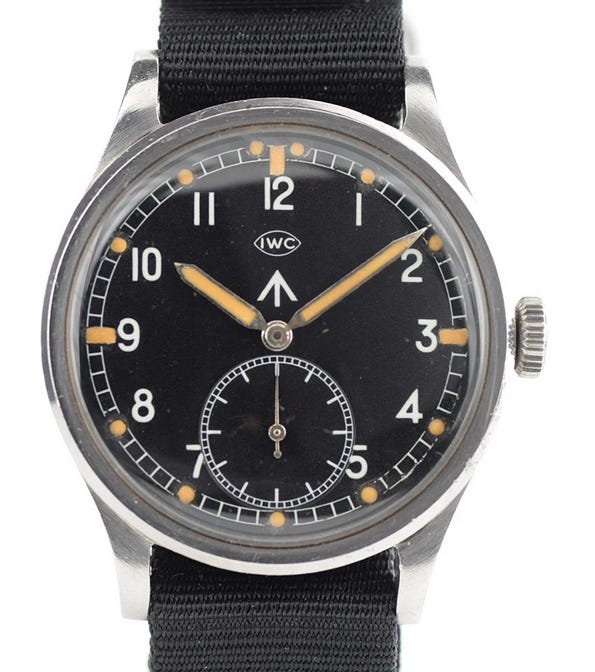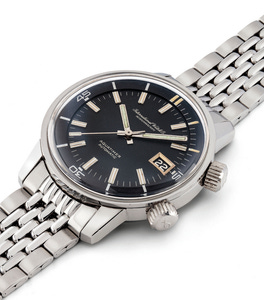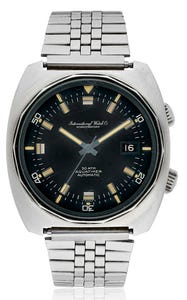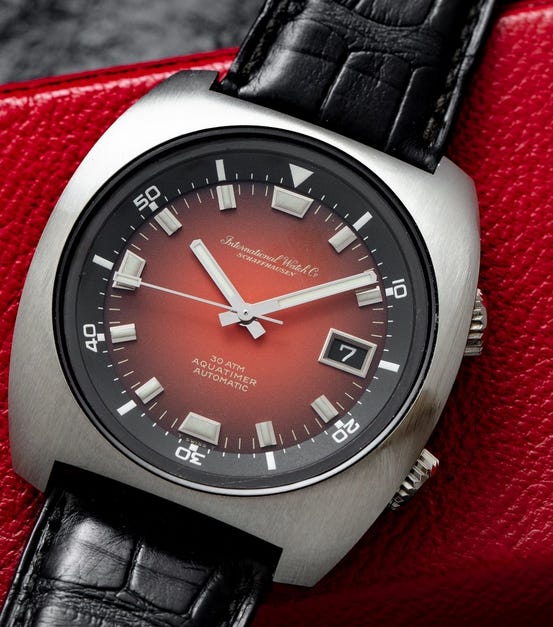IWC was not the first watchmaker to produce diving watches. Rolex patented the waterproof Oyster system in 1926 and later in the 1950s other important watch brands followed the trend that had begun with the Oyster system. The post World War II years saw an increase in economic activity with new business opportunities, new products, and new travel. These are the years when people developed an interest in the exploration of the depth of the oceans thanks to the documented exploits of scientists such as Jacques Cousteau. Watchmakers addressed the demands originating from these new socio-economic trends by developing diving watches, which became both scientific tools and recreational accessories.
IWC's first diving watch was produced in 1945 for the British Navy and it was water resistant to a diving depth of only 10 meters.
The IWC W.W.W. (1945): Watch, Wristlet and Waterproof.
The first IWC Aquatimer was born in 1967 with the Ref. 812 AD (renamed 1812 in 1971) with a water resistance of 200 meters.
An IWC Aquatimer Ref. 812 AD auctioned at Christie's in 2017. Price realized HKD 93'750.00.
Two years later, in 1969, Ref. 812 AD was followed by Ref. 816 AD (renamed 1816 in 1974). This new reference displayed a substantial change in appearance from the previous one and it featured an improved water resistance to a depth of 300 meters.
An IWC Aquatimer Ref. 816 AD auctioned at Christie's in 2016. Price realized: USD 2'750.00.
The self-winding Aquatimer Ref. 816 AD presented itself with a cushion-shaped case and a date function at the 3 hour marker. It was fitted with a leather strap or a "Bead of Rice" bracelet by renowned makers Gay Freres. Its centered-seconds dial included red shadow and blue shadow coloring options, in addition to matt black.
Thirty-seven millimeters in size, the case was stainless steel and screwed down, displaying a bezel with 14 facets. The case carried two crowns, one of which (at the 2 hour marker) was used to operate the rotating internal bidirectional bezel to monitor decompression times.
The Aquatimer Ref. 816 AD was powered by in-house caliber 8541 with 23 jewels, a power reserve of 44 hours, and a beating frequency of 19'800 vph. A fact little known is that the caliber of the Aquatimer included the Pellaton Winding Mechanism an innovation developed by IWC's technical director Albert Pellaton in 1944, which enable the rotor to add energy to the mainspring with even the most minimal motion of the rotor in either direction.
The Aquatimer Ref. 816 AD went on for ten years until it was replaced by Ref. 1822, in 1979 (pictured below). Nowadays the watch is estimated to be worth between 4’000 CHF and 6’000 CHF on online vintage platforms, depending on its conditions.






